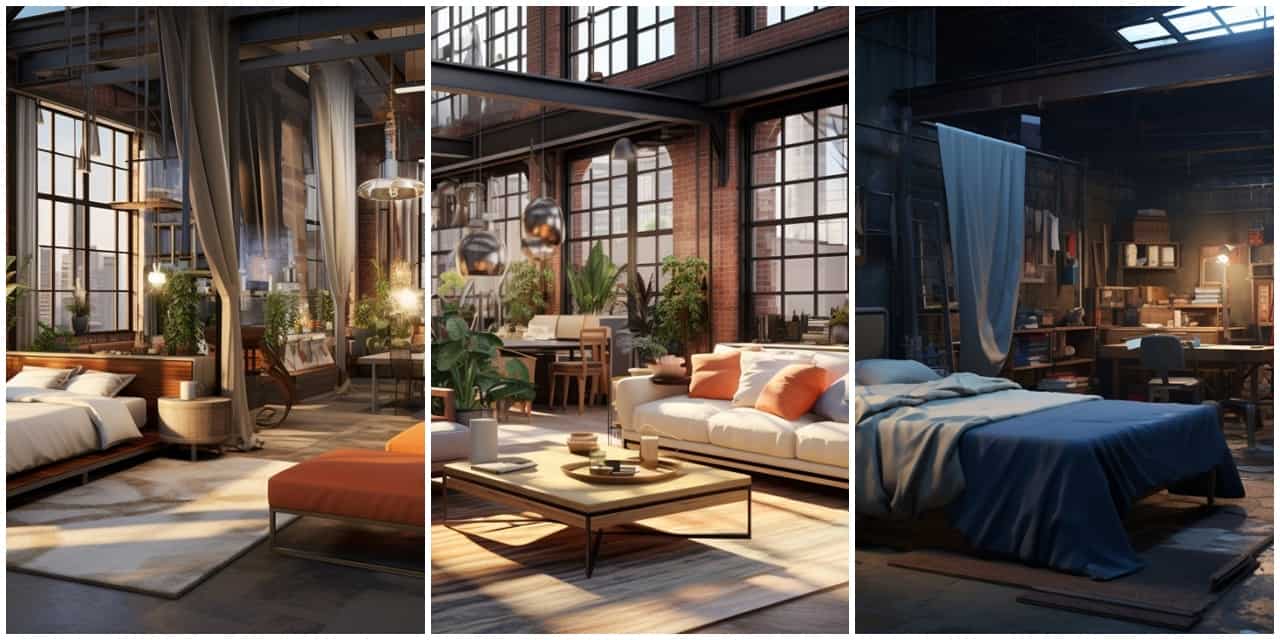Considering a move to a warehouse? It’s an unconventional idea, but recently, more people are finding charm in such unique living spaces. As a fan of distinct living arrangements, I decided to delve into the ins and outs of warehouse living.
Throughout this article, we’ll be discussing various elements you need to think about, such as the appropriateness of the location and the legal aspects involved.
The answer is yes; you can live in a warehouse with the right permissions, location, and renovations. Warehouses can become remarkable living spaces, though major upgrades are required. The pros of space and uniqueness may outweigh the cons of renovations.
Come along as we examine whether calling a warehouse ‘home’ could be a viable option for you.
Key Takeaways
Location and livability are important factors to consider when choosing a warehouse as a living space, including access to public transportation, proximity to good schools, availability of parking, and crime statistics in the area.
Zoning laws play a crucial role in converting a warehouse into a habitable space, as most warehouses are zoned for industrial use and need to be rezoned for residential use.
Structural considerations and costs should be taken into account, including conducting inspections, addressing any major issues, ensuring building codes are up to date, and potentially replacing windows and elevators.
Warehouse living spaces offer a unique opportunity for customization and design, taking advantage of features like exposed brick, open spaces, natural lighting, and high ceilings. It is important to consider the functionality and practicality of design choices and seek inspiration from other warehouse living spaces.
Table of Contents
Evaluating Warehouse Location
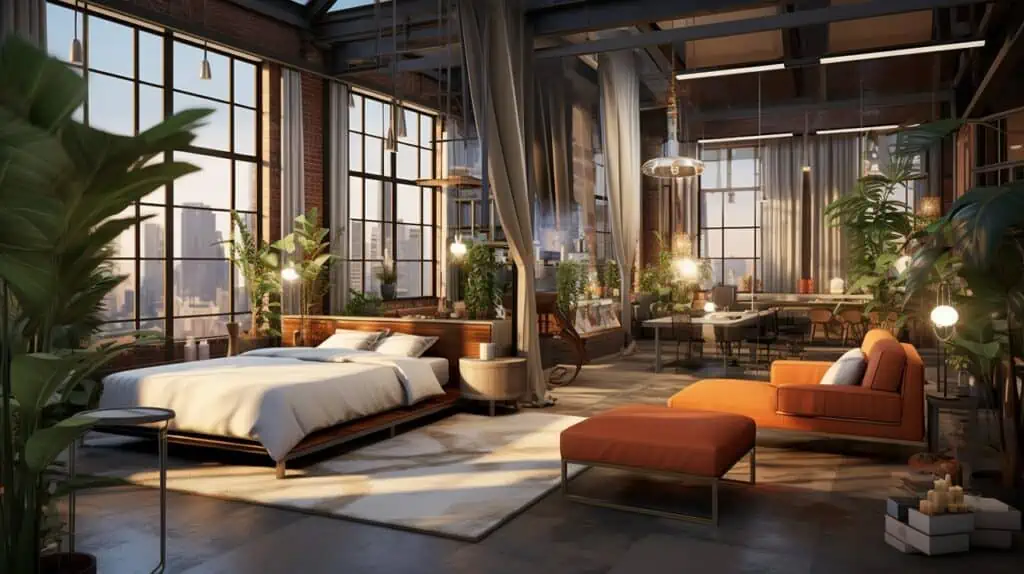
Pondering the idea of warehouse living necessitates a thorough assessment of the location, bearing in mind its convenience and available facilities. One of the pivotal factors is the availability of public transport. Does the area provide easy access to buses, trams, or subways? This aspect can greatly influence your mobility and daily commuting.
The safety of the neighborhood is another vital concern. Checking the area’s crime statistics can provide insights into the level of security you can expect. Feeling safe in your own home is paramount.
Apart from these, the proximity to essential services like supermarkets, eateries, and leisure facilities should also influence your decision. Having these facilities nearby can significantly improve your quality of life.
It’s also prudent to look into local zoning laws. The warehouse might need to be rezoned to be legally converted into a residential space.
All these factors underline the need for detailed research before making a decision. As a wise man once said, ‘The more you know about your neighborhood, the better your living experience will be.’
Understanding Zoning Laws
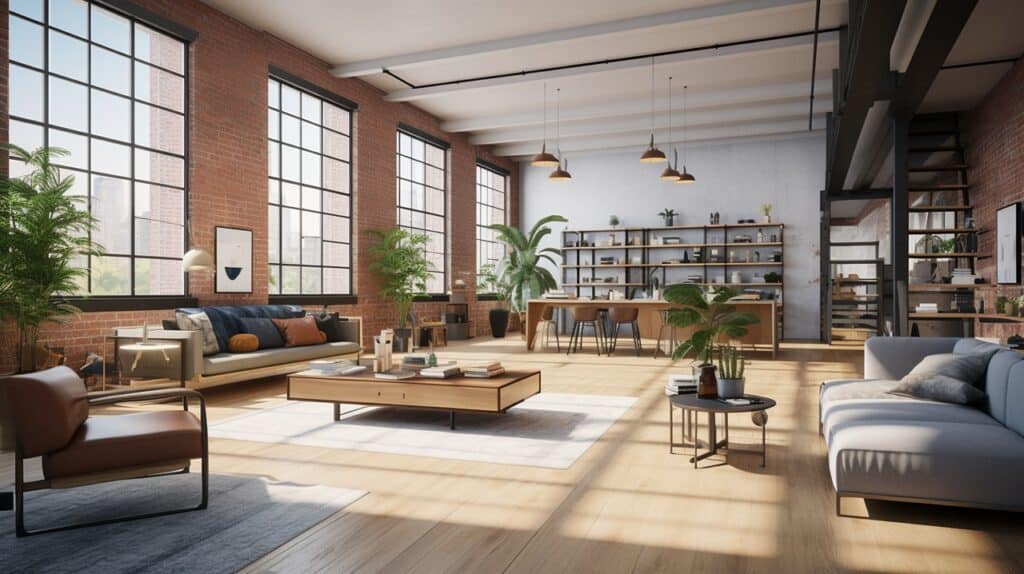
To get a grip on the zoning laws that govern warehouse living, it’s imperative to become conversant with the unique rules and requisites enforced by local authorities. Zoning regulations play a significant role in shaping the use and development of properties, warehouses included. Initially, most warehouses come under the industrial zoning category, and for residential purposes, a change in zoning is necessary.
This change demands securing permits and licenses, satisfying building code norms, and following health and safety standards. Non-adherence to these zoning laws could result in potential penalties. For your ease, here’s a table that simplifies essential aspects of zoning laws concerning warehouse living:
| Zoning Laws for Warehouse Living |
|---|
| Types of Zoning |
| Permits and Licenses |
| Building Code Requirements |
| Health and Safety Regulations |
| Potential Penalties |
Getting a handle on and abiding by zoning laws is a must when contemplating warehouse living, as it guarantees a secure and lawful living environment.
The short answer is yes, you can live in a warehouse. Warehouse living spaces are becoming more and more popular in cities around the world. With individuals working in the city, many are making the move to be closer to work by moving into old warehouses that have been magically transformed into beautiful homes.
https://www.schwarzproperties.net/industrial-space/can-you-live-in-a-warehouse/
As they say, “Knowledge of the law excuses no one.” So, stay informed and stay safe.
Structural and Cost Considerations
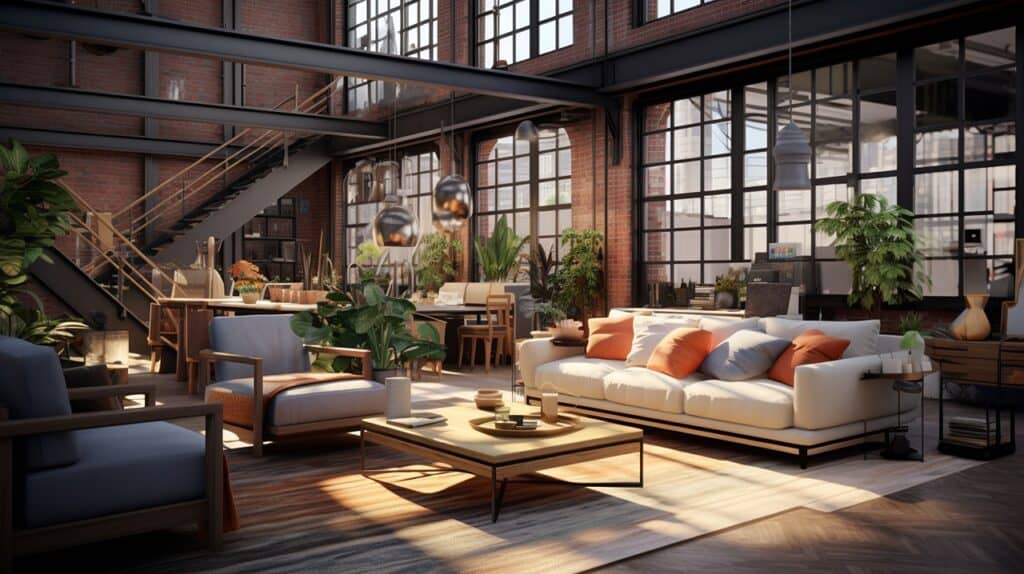
A thorough structural assessment and architectural survey were carried out to pinpoint any significant problems with the warehouse. The evaluations highlighted certain structural problems that necessitate upgrades and repairs. This implies that there will be extra expenses in making sure that the warehouse is fit for habitation. Compliance with updated building codes isn’t a choice but a requirement, and acquiring all the mandatory permits and licenses is a must. Replacing outdated windows and elevators, if needed, is another factor to consider.
Living in a warehouse offers the advantage of customization. The broad, open spaces are a blank canvas for your creativity. The space’s unique elements, such as exposed brick, high ceilings, and natural light, provide a vast array of possibilities for crafting a distinctive living environment.
As the famous architect Frank Gehry once said, ‘Architecture should speak of its time and place, but yearn for timelessness.’ In adapting a warehouse into a home, we have the freedom to create a timeless space that speaks to our personal style and needs.
Designing Your Warehouse Home

The task of designing a warehouse home is an opportunity to really let your creativity shine. The unique elements of a warehouse, such as the open layout, natural light, and high ceilings, lend themselves well to personalization. I’ve had the pleasure of tailoring my warehouse space to fit my lifestyle perfectly.
One of the most striking features is the exposed brick walls. They bring a certain charm and character that’s difficult to replicate in traditional homes.
The open floor layout, on the other hand, offers flexibility for arranging furniture to my liking.
Decemberists frontman Colin Meloy paid $180 per month to live in a warehouse in the 90s, which less than what people typically pay now.
https://www.portlandmercury.com/news/2018/01/14/19606727/watch-sundays-60-minutes-segment-on-portland-spoiler-ted-wheeler-loves-portlandia
One important aspect I focus on is the optimization of natural light. By thoughtfully positioning windows and opting for light-colored furnishings and decorations, I’ve managed to brighten the entire space.
Another significant feature of warehouse homes is their high ceilings. They not only add a touch of grandeur but also offer creative lighting solutions, like installing high bay LED lighting.
The challenge lies in ensuring that my design choices aren’t just aesthetically pleasing but practical as well. Through careful planning and consideration, I’ve managed to turn my warehouse into a home that’s both stylish and comfortable.
As Charles Eames once said, “The details aren’t the details. They make the design.” In my journey of designing my warehouse home, every detail contributes to creating a space that truly feels like home.
How to Find a Warehouse
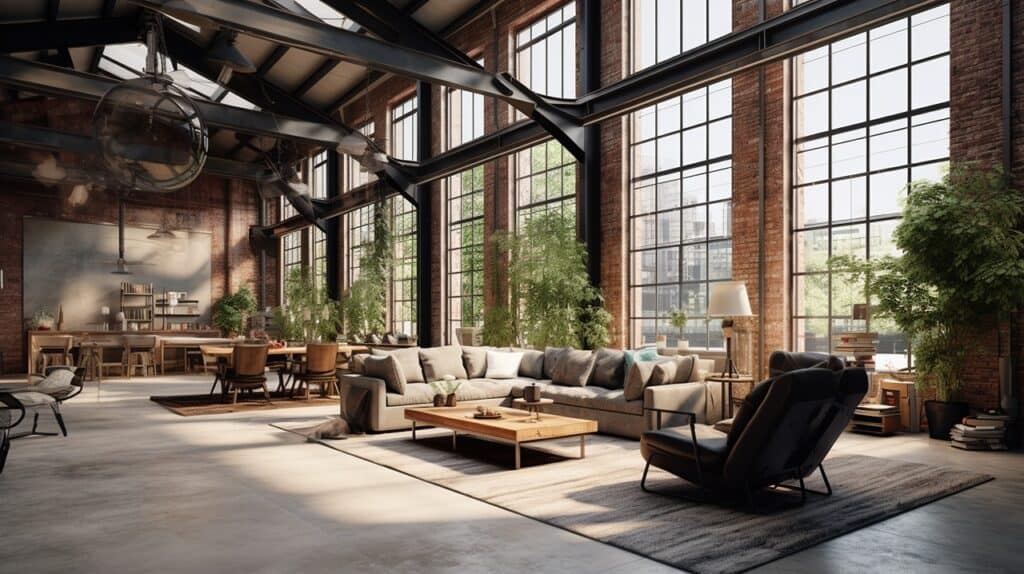
In the process of finding a warehouse, you might find yourself consulting online property listings or local real estate agents. Both can offer a wealth of information on warehouses available for rent or purchase in your desired area. Consider the location of the warehouse carefully, as it has a direct impact on its suitability for living. For instance, you want to check out the surrounding transport links and parking availability.
Also, it’s wise to get a feel for the safety of the area. This can be done by checking out the local crime rates. A safer neighborhood not only ensures peace of mind but also adds to the overall desirability of the warehouse.
When you’re hunting for a warehouse, one tip is to pay attention to commercial properties. That’s because these types of buildings are often more adaptable for residential purposes.
Taking into account these considerations will assist you in securing a warehouse that not only fulfills your requirements but also provides a cozy and comfortable living space. So go ahead, take the leap, and find your dream warehouse!
Challenges of Warehouse Living
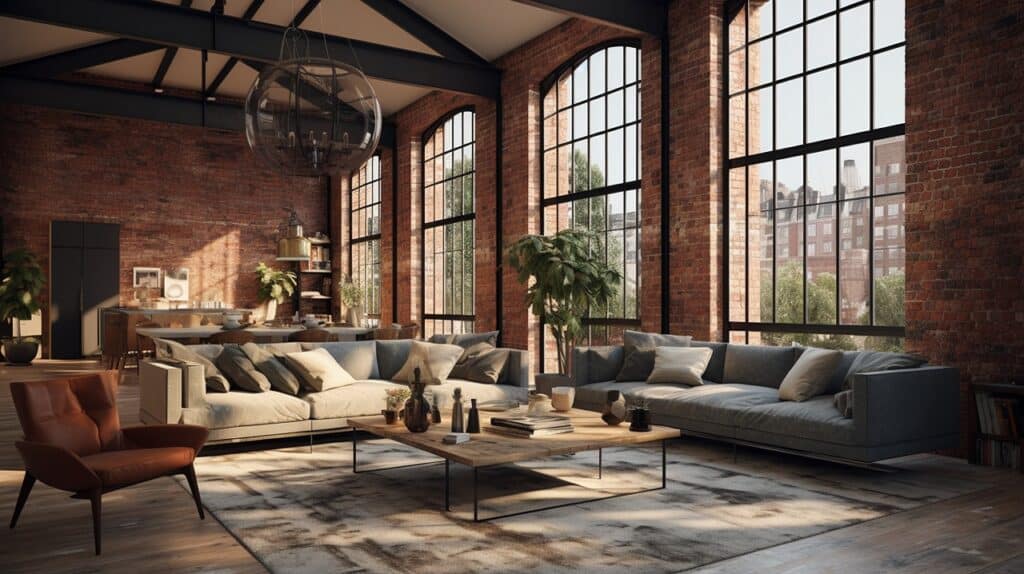
Opting for a warehouse lifestyle comes with its own set of unique difficulties. Before making the leap into this unconventional style of living, potential occupants should be aware of several issues that may stir strong emotions.
The charm of exposed brick walls and an industrial vibe might attract some, but these features can also create complications. For instance, the lack of proper insulation and soundproofing can be a concern. Plus, the existing plumbing and electrical systems mightn’t meet residential requirements, necessitating upgrades.
Heating is another matter to consider. Warehouses typically use commercial heating systems that mightn’t suffice in warming the expansive open spaces, especially during the chill of winter.
Finally, ensuring resident safety is paramount. Outfitting the warehouse with fire protection systems or enhancing existing ones might be required.
As I’ve told my friends, “Before converting a warehouse into a home, understand the challenges, consider the cost, and plan for the unexpected.” Make sure you weigh these factors before deciding on warehouse living.
Alternatives to Warehouse Living
If the warehouse lifestyle isn’t for you, don’t worry; there are plenty of different options available for you to peruse. As you start your search for a new home, it’s worth thinking about how close you’ll be to essential amenities like schools, grocery stores, and coffee shops – these are key elements that will make your day-to-day life easier. Also, don’t forget to consider the fuel stations – a critical point often overlooked when house hunting.
Another factor to keep in mind is the potential presence of hazardous substances on the premises. A comprehensive inspection and a detailed report about the possible hazardous materials on the property will go a long way toward ensuring your new home is safe and sound.
As you move forward in your search for a new home, keep these considerations in mind. There’s a wide array of living situations out there – you’re bound to find one that fits your unique needs and desires. As the famous interior designer Nate Berkus once said, ‘Your home should tell the story of who you are and be a collection of what you love.’ So, don’t be in a rush; take your time to find the right place.
Frequently Asked Questions About Warehouse Living
What Are Some Common Amenities and Utilities to Consider When Converting a Warehouse Into a Living Space?
Some common amenities and utilities to consider when converting a warehouse into a living space include access to water and electricity, heating and cooling options, bathroom and kitchen facilities, internet and communication services, and waste management and sanitation.
Are There Any Potential Penalties for Non-Compliance With Zoning Laws and Building Codes When Converting a Warehouse Into a Home?
Yes, there can be potential penalties for non-compliance with zoning laws and building codes when converting a warehouse into a home. It’s essential to adhere to regulations to avoid legal consequences.
How Can a Warehouse Be Modified to Create a Functional Living Environment?
To create a functional living environment in a warehouse, modifications can be made, such as partitioning the space, adding insulation and soundproofing, and incorporating furniture and storage solutions.
What Are Some Alternatives to Living in a Warehouse for Those Seeking Unique Housing Options?
There are several alternatives to living in a warehouse for those seeking unique housing options. Some options include shared workshop spaces, renting a garage or storage unit, co-living arrangements, and exploring affordable housing options.
What Safety Considerations Should Be Taken Into Account When Living in a Warehouse?
Safety considerations when living in a warehouse include ensuring proper ventilation, addressing fire safety with smoke detectors and fire extinguishers, installing security measures, and conducting regular maintenance to prevent hazards.
